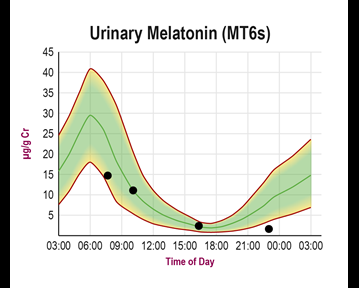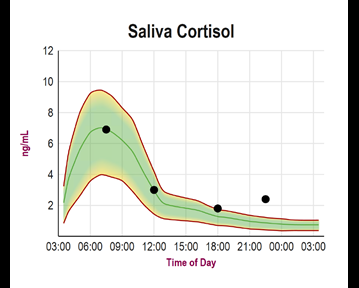How Diurnal Curves Affect Sleep
Our sleep-wake cycle is a daily pattern that determines when it’s time to sleep and when it’s time to be awake. This cycle is guided by several factors, including the hormones cortisol and melatonin.
Ideally, the master stress hormone cortisol is high when master sleep hormone melatonin is low – and vice-versa – leading to a balanced sleep-wake cycle. With cases of sleep disturbances and insomnia, irregular cortisol levels can be just as problematic as irregular melatonin levels.
Like our adrenal glands, which operate on a diurnal cortisol curve, melatonin also has a diurnal pattern. A normal curve shows melatonin rising during the night to peak during the early hours of the morning – generally 2am to 3am. Levels then drop with the onset of daylight and remain low throughout the day.
The diurnal melatonin curve can easily be assessed by taking four daily dried urine collections – typically done upon waking, two hours after waking, before dinner and before bed – and charting them on a 24-hour graph.

When assessing sleep disturbances, it’s essential to have diurnal melatonin graphed in relation to diurnal cortisol, which is why ZRT combines these in the Sleep Balance profile. A disrupted diurnal cortisol pattern with high night-time levels can be an indicator of a stress response that extends into the night-time hours, causing hyperarousal that disrupts sleep.

Higher than normal cortisol production during the evening and overnight can result from stress demands. General symptoms include feeling “tired but wired,” inability to fall asleep, frequent waking and irritability.
Several ZRT dried urine profiles include the diurnal melatonin curve. Just look for the MT6s x 4 (melatonin x 4) indication in the profile. Download a complete list of profiles below.
Blog: Melatonin’s Importance is So Much Bigger than Sleep
Download: ZRT Overview of Profiles

